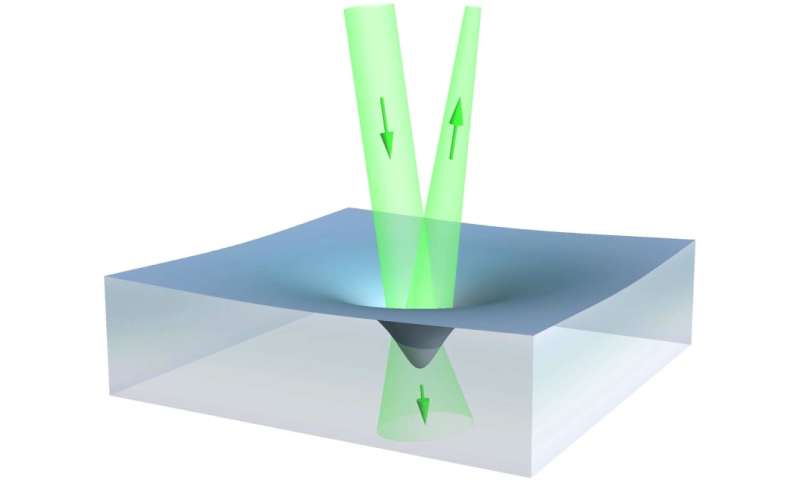Year in Review—The most important research of 2015: June

(ScienceX)—In this new monthly series, we are offering summary articles featuring links to some of the most interesting, intriguing or popular stories that appeared on ScienceX throughout 2015. This is the June 2015 edition.
In physics news, a team with members from China and Israel made the first observation of the pushing pressure of light, muddying the debate regarding whether light pushes or pulls a medium—prior studies have shown it pulls. A team with members from China and Singapore revealed a new family of entangled states that demonstrated new violations of local realism. And another team in France took a look at the physics of badminton, specifically the flip phenomenon that occurs after the birdie is struck. Also, a team working in Singapore found that the blind quantum computing method surpasses the efficiency 'limit' previously thought to be universal.
In technology news, a team of researchers at Columbia University found a way to obtain renewable energy from evaporating water—by developing two engines, one that powered a light and another that pushed a toy car. And another team at the University of California announced that they had broken power and distance barriers for fiber optic communication by developing wideband "frequency combs," perhaps paving the way to increased data transmission rates for fiber optic cables which, of course, serve as the backbone of the internet.
In biology news a team working at the University of Texas announced that they had discovered the first sensor of Earth's magnetic field in an animal—in the neuron structure of a tiny worm. And another team at the University of Warwick found that self-awareness is not unique to mankind, by studying the ways rats behave when making their way through a maze.
In medical news, a team of researchers working at the University of Iowa found that bacteria may cause type 2 diabetes—exposing rabbits to a toxin produced by Staphylococcus aureus caused them to develop symptoms of the disease. And another team at McMaster University claimed to have discovered the key to maintaining muscle strength while we age—exposure to AMP-activated protein kinase.
The January 2015 edition of our Year in Review series can be read here.
The February 2015 edition of our Year in Review series can be read here.
The March 2015 edition of our Year in Review series can be read here.
The April 2015 edition of our Year in Review series can be read here
The May 2015 edition of our Year in Review series can be read here
© 2015 Phys.org